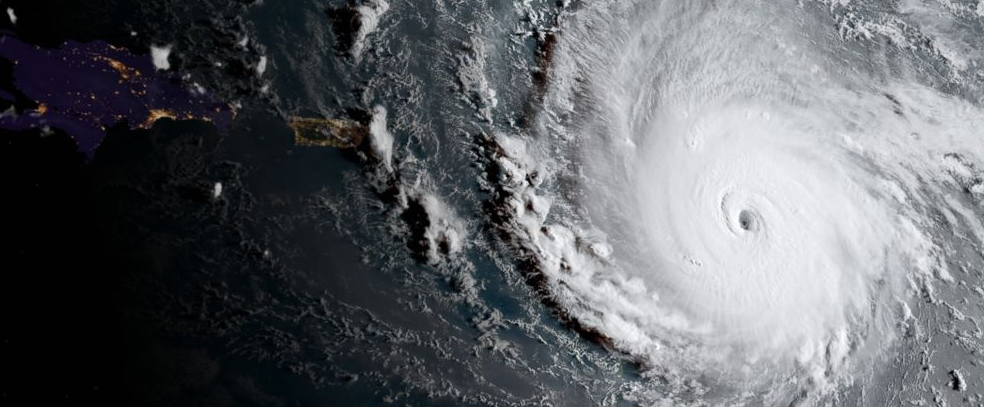The state of Florida, the Caribbean and portions of the Southeastern U.S. are reeling from the impact of Hurricane Irma this week. The deadly storm brought damaging winds and torrential rain to the entire Sunshine State, including our headquarters in Jacksonville.
We’re now more than halfway through the 2017 Atlantic hurricane season, and with more than 11,000 food and beverage manufacturing plants in hurricane-susceptible states on the Gulf and Atlantic coasts, it’s critical to plan for the damage a hurricane can bring.
At Stellar, we’ve helped many clients recover in the aftermath of hurricanes, tornadoes and flooding. Let’s explore the process of getting your plant up and running after severe weather strikes.
Initial response after a storm
Restoring a facility to safe operating condition is the ultimate goal. Safety is the priority — both in terms of food safety and the wellbeing of the people inside the building.
When responding to a facility affected by a natural disaster, we:
- Analyze the exterior envelope of the building to ensure it’s safe to reoccupy
- Communicate with relevant municipalities regarding the building’s structural integrity
- Provide redesign and construction services to repair damage
- Seek out the materials needed to rebuild
Structural safety and protecting your people
The first step is ensuring the structure is safe before crews can enter to begin the recovery and restoration process. This includes testing for possible ammonia leaks, checking for any unsafe electrical exposure and clearing any debris or leftover sandbags.
Before a severe weather event, doors and windows may be locked or boarded up to prevent damage. It’s critical to remove these temporary measures and ensure exits aren’t obstructed so that personnel can exit safely in the event of a fire, ammonia leak or other emergency.
Another consideration when analyzing damage is the facility’s roof. In high winds, the roof is often partially removed or worse. We recently had a tornado damage the roof of an ongoing project. We visited the jobsite as soon as possible, pumped out the ammonia refrigeration and analyzed the roof to make sure it didn’t collapse while product was being removed.
Remember: No priority is greater than the safety of your personnel and the crews working to restore your plant.
Restoring systems and removing product
Once preliminary safety measures are accounted for, we analyze, troubleshoot and help restore electrical, water and refrigeration systems. Stellar helps customers work with utility companies to get the facility back up and running after a storm, but the recovery process can begin before power is restored.
We bring in temporary generators, analyze the as-is condition of the plant and begin establishing clear pathways for workers and fork trucks. In the past, we’ve brought in temporary batteries to power fork trucks so that they can begin removing any spoiled product from the facility.
If the building is structurally safe and if you have a skilled staff that understands the hazards, the sooner you can get in the facility and start the process, the better.
Flooding and water damage
If your facility experiences flooding, you must evaluate your floor. Non-destructive testing can determine the condition of insulation and soil beneath the slab. If water penetrates through the flooring, insulation can become saturated. These materials must be dried out as quickly and as thoroughly as possible to avoid mold growth.
Flooding can also damage and move walls and columns, which can create structural integrity issues. This is one of the main issues we look for when analyzing a facility after major flooding.
Preparing for the next storm
It’s never too early to start preparing your facility for the next hurricane or severe weather event. We’ve previously published a more comprehensive post on preparing for a hurricane, but here are a few of my tips to keep in mind.
Minimizing flood risks with redundant systems
One key way to reduce the risk of flooding ahead of time is to establish redundant systems for your site drainage. If your primary system fails or gets backed up, an extra pipe and/or an alternate path to divert water can prevent major flooding. Designing this resiliency into your facility may cost more upfront, but it’s nothing compared to the costs associated with catastrophic flood damage.
Of course, you should also ensure your finished floor is built up higher than the surrounding areas so flood waters don’t drain down into your site.
Protecting your equipment
Your equipment and machinery are some of your most valuable investments. To prevent damage and loss from heavy winds, ensure that your exterior mechanical equipment has tie-downs or permanent anchorage to secure it.
When it comes to flooding, most processing equipment is washdown capable so motors should be able to handle water. Investing in waterproof motors not only makes for easier cleaning, but it reduces your risk of damage during a flood.
Commercial generators
Hurricane Irma triggered record-breaking power outages and left 4.4 million people without electricity across the state of Florida. Major storms often mean widespread power loss, so it can be helpful to have a diesel generator on site. Industrial generators can cost up to $750,000, so instead of buying one, many plant owners opt to rent one in case of an emergency.
However, you can save yourself a headache by prepping your electrical work to receive that generator power properly, even if you don’t buy it. Installing proper wiring and disconnect switches for a future generator can cost about $50,000 upfront, but that investment can be the difference in it taking a few hours to hook up a generator versus a few days.




